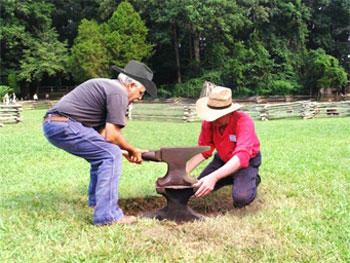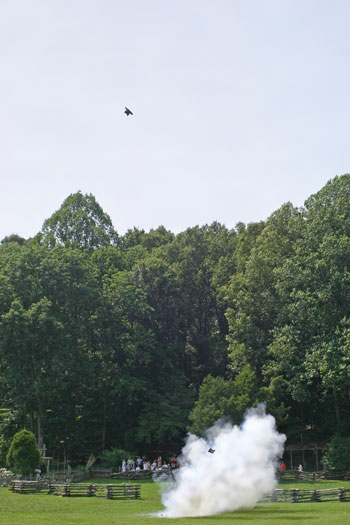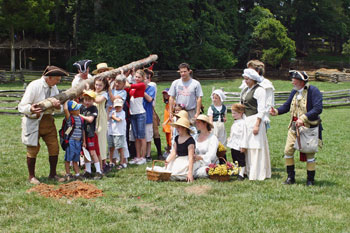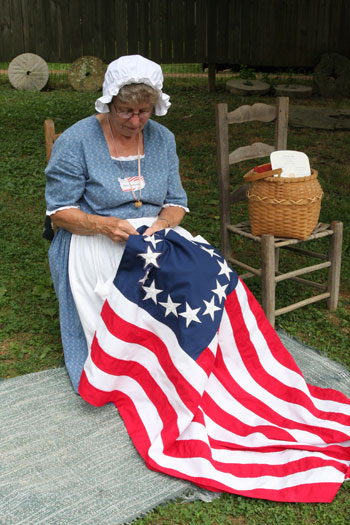 |
||||||||||||||||||||||||||||||||
|
||||||||||||||||||||||||||||||||
|
|
||||||||
 |
|
||||||||
|
 |
||||||||
 |
|
||||||||
|
 |
||||||||
|
Museum of Appalachia E-mail us at: museum@museumofappalachia.org Visit our website: museumofappalachia.org The museum photo at the top of the page is a photo of our display barn and the "peoples building" in winter. We have multiple buildings. One of which is the "Appalachian Hall of Fame" which contains the memorabilia and stories of many famous and some not so famous local people who have left their mark on the area. Hours are seasonal. Our fees are as follows (Call the Museum at 494-7680 for admission rates.)
Family rate $30.00
(parents w/children ages 6-12 Adult Group Rate $12.00
Adult $50.00
With more than 30 historic log buildings gathered onto 63 acres and hundreds of exhibits celebrating the creativity and color of our Appalachian forebears, the Museum annually hosts over 100,000 visitors who view thousands of relics in authentic settings. It was, in fact, founder John Rice Irwin's intention to develop the Museum as an authentic representation of early life in Appalachia, seeking to make the dwellings appear as if the family has just strolled down to the spring to fetch the day's supply of water. In addition to hosting thousands of families, schoolchildren, weddings and reunions, basket collectors, and historians each year, the Museum celebrates the seasons with three special events.The Museum is open from 9 a.m. to 5 p.m. every day in December except for Christmas Day. It is located 16 miles north of Knoxville, one mile east of I-75, exit 122. The Bookshelf Collection is a set of books, DVDs, and online resources donated by the Institute of Museum and Library Sciences, the primary source of federal funding for the nation’s museums and libraries, and its partner in the project, the American Association for State and Local History. The Museum received this essential set of resources based on an application describing the need to preserve its thousands of authentic Appalachian artifacts. Topics covered in the Bookshelf materials include the philosophy and ethics of collecting, collections management, emergency preparedness, and conservation methods. “These wonderful books and on-line resources will be in valuable in helping us care for the artifacts in our collections,” said Elaine Meyer, the Museum’s executive director. “We’re excited to have such thorough and up-to-date resources at our disposal.” The IMLS launched the Bookshelf Collection grants in 2006 after a study documented a nationwide need for such resources. Some 3,000 sets will be awarded to museums nationwide by the end of 2009. “According to a recent national survey, our important collections are at great risk, and without them, the American story simply cannot be told to future generations,” said Anne-Imelda Radice, IMLS director. The Museum of Appalachia, founded in 1969 by John Rice Irwin, is a living history village with dozens of authentic log structures, exhibit buildings filled with thousands of historic Appalachian artifacts, gardens surrounded by split rail fences, and a variety of farm animals in a picturesque setting. A large craft and gift shop contains handiwork from area artisans, and a restaurant features fresh-from-the-garden produce and home-style desserts. In 2003, the Museum was converted to a 501(c) (3) corporation; it now operates under a Board of Directors. In May 2007, the Museum announced its formal association with the Smithsonian Institution’s Affiliations Program. By purchasing a Museum membership, visitors can support the Museum’s mission while touring the Museum at no additional charge (except during the Tennessee Fall Homecoming). Smithsonian memberships are also available.
The dramatic anvil shoot is the highlight of the event. Several times during the day, excitement builds as crowds gather to watch as gunpowder is packed under the anvil and ignited. With a loud boom, the hunk of iron bursts from a cloud of smoke, catapulting as high as the treetops—some 125 feet into the air. The earth literally shakes, and the deafening boom, it is said, can be heard as far away as 15 miles. Anvil shoots will take place periodically throughout the day. This year, an expanded slate of activities is scheduled. Musical performances will include traditional and bluegrass bands, dulcimer playing in the Hall of Fame, and informal “porch picking” at several log cabins. An old-time “brush arbor” will host church services and hymn singing. Mountain activities will be demonstrated, including rail-splitting, cross-cut sawing, basket-making, whittling, corn grinding, sheep herding, quilting, and blacksmithing—and the old-time circular sawmill will be in operation. Visitors can match their skills at the game of Checkers with master player Robert Butler. “Betsy Ross” will tell the story of the nation’s first flag while sewing a replica. Patriotic ceremonies, led by the Sons of the Revolution, will include the National Bell Ringing Ceremony at 2 p.m. in conjunction with the national event. The Liberty Pole Raising will re-enact Revolutionary War protests against British rule. There’ll be old-fashioned cake walks, with proceeds benefiting the Museum’s newly established Endowment Fund. Tasty traditional treats will be available, including Tennessee barbeque and hot fruit cobblers baked over the coals in Dutch ovens, homemade ice cream, freshly brewed sassafras tea, roasted corn on the cob, freshly squeezed lemonade, fried green tomatoes, and cool slabs of watermelon. Visitors may also tour the extensive village-farm complex, with dozens of historic log structures, display buildings containing tens of thousands of authentic Appalachian artifacts, gardens surrounded by split rail fences, and a variety of farm animals in a traditional farm setting. The Hall of Fame offers a portrait of the Appalachian people, both famous and ordinary—and in air-conditioned comfort. In the entrance building are a large craft and gift shop containing handiwork from area artisans, and a restaurant featuring fresh-from-the-garden produce and mouthwatering home-style desserts. Throughout the summer, the Museum is open daily from 8:30 a.m. to 7 p.m., with live old-time music played daily for visitors. Traditional gardens will be producing their bounty of fresh tomatoes, peppers, squash, herbs, greens, and other vegetables. Other seasonal demonstrations are offered periodically; call for events scheduled on specific days. |
|||||||||
|
|
||||||||
|
Support Your Local Galleries and Museums! They Are Economic Engines for Your Community.
Subscribe to Our Free Weekly Email Newsletter! |
|||||||||
| ADVERTISE ON THIS SITE | HOME | EXHIBITIONS | INDEX | EVENTS | ABOUT US | LINKS | CONTACT US | DONATE | SUBSCRIBE |
| Copyright 2013 Art Museum Touring.com |
